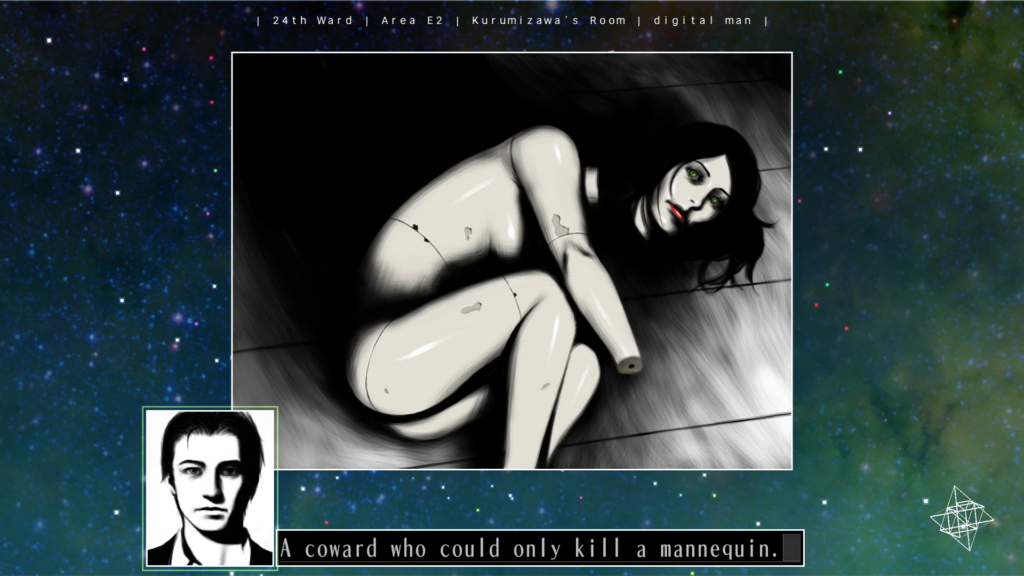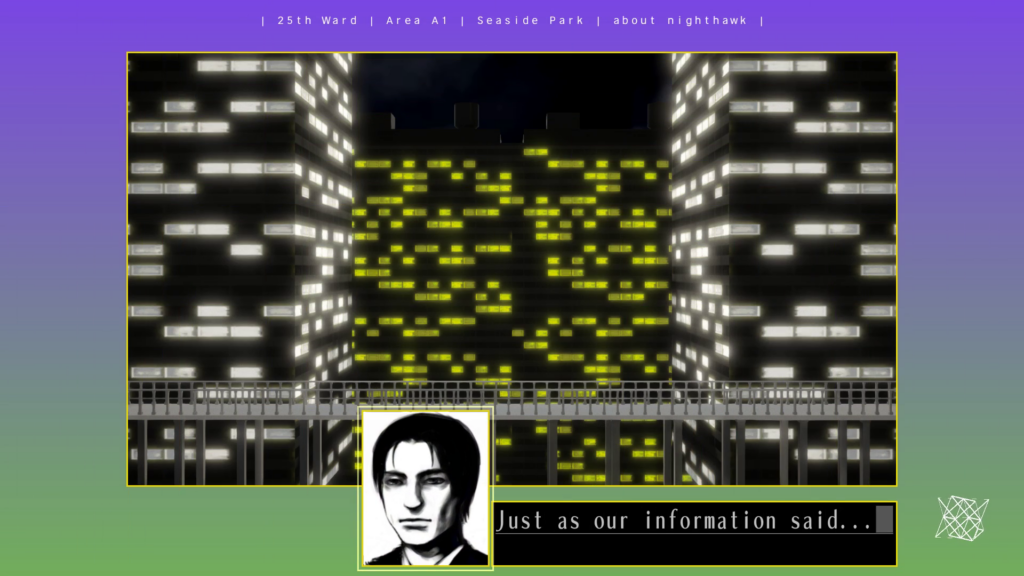Though framed as the big bad, given that the protagonists are murderous cops serving the dictatorship and fighting to uphold the hellish “morgue” of the 25th Ward, Kurumizawa is not exactly a villain. He seems to hate Shiroyabu for using “criminal power” to uphold the oligarchs, but Kurumizawa otherwise never seems sadistic. If anything, though intimidating, he seems substantially less callous and cruel than Shiroyabu, Kuroyanagi, Tsuki, Osato, etc. In “digital man,” Sumio and Sakura investigate Kurumizawa for stabbing a woman to death, but they eventually learn he used his powers to fake the crime. In reality, Kurumizawa only damaged a mannequin as part of his widespread trolling of the authorities, for which Sumio bizarrely condemns him as a “coward.” Would Sumio prefer a serial killer?

Later, in “electride,” Kurumizawa apparently assassinates Mikoshiba, the only person he personally kills in the story. But we know how mayors fare in this series: Mikoshiba is a demagogue running two separate groups of killer cops engaged in a gang war, both sides of which routinely murder civilians, as part of an experiment in controlling Kamui/Ayame that ends in the deaths of several hundred thousand people. In Travis Strikes Again, Bruno San Marino characterizes this explicitly as “genocide” (and it might be the Earth Rage disaster in the backstory of Let It Die). Killing the mayor, then, is hardly the act of a villain. It is the equivalent of what Kusabi does at the end of Transmitter. Kurumizawa’s objective, “KILLING THE LIFE,” is a liberatory one. The ward deserves to be killed.
But does Kurumizawa succeed in embodying the creative violence of the earlier Kamui? In “MISOGI,” on 11 November the state destroys the 25th Ward on its own. According to Kipple and Bruno San Marino, this was the rulers’ objective from the beginning. Kurumizawa, then, unknowingly carries through the policy the syndicates already meant to execute yet is not even the one to pull it off. And ending the 25th Ward does not end the “cycle of crime, dehumanization and death.” Depending on how he understood his mission to “KILL THE LIFE,” he might have intended to kill 300,000 people the same as the syndicates apparently do.
Kurumizawa also never interacts with Tokio or Meru nor shows any concern whatsoever with the ELBOW-style experiment that is the core of the “facts” behind the “truth.” Given that Tokio represents the common people, as I will explain in “Sacrifices of Our Times” (the video with which I plan to end this series), Kurumizawa may fail because he associates with power brokers such as Kiryu instead of with the public. Travis Strikes Again implies this was not always the case: Kurumizawa’s ex-girlfriend, the punk artist Dr. Juvenile, is a Ukrainian orphan who flees the CIA and eventually lives in poverty in 0 Ward. That this radical figure leaves shows his loss of this contact with the people.

Furthermore, before his transformation, Kurumizawa works with the secret police. Even after transforming, he continues to do so, as shown in “about nighthawk.” Though presumably he ultimately intends to destroy them, this must involve continuing his secret police surveillance and execution duties. “Red, Blue, and Green” depicts Kurumizawa as the “representative” of the Union Hotel chain, a place of Harman Smith’s control and that, based on Edo Macalister’s involvement here, in killer7, and in Kurayami Dance, probably belongs to the former ELBOW. So Kurumizawa is hardly a liberatory figure.
***